Choosing components that fit the requirements of a project is the biggest concern in the present-day industrial sector. In this blog, we wish to navigate you through HDPE pipe fittings and fabricated fittings, with the particular aim of establishing Ferguson Industrial’s credibility in the domain. If you are engaged in water management, mining, or any other field that requires reliable piping solutions, knowing the details of HDPE products will enable you to be self-reliant. Let us take you through the characteristics, advantages, and uses of the HPDE fittings, which made them as popular as they are in the industry for their strength and performance.
What is HDPE Pipe Fittings, and Why Choose Them?
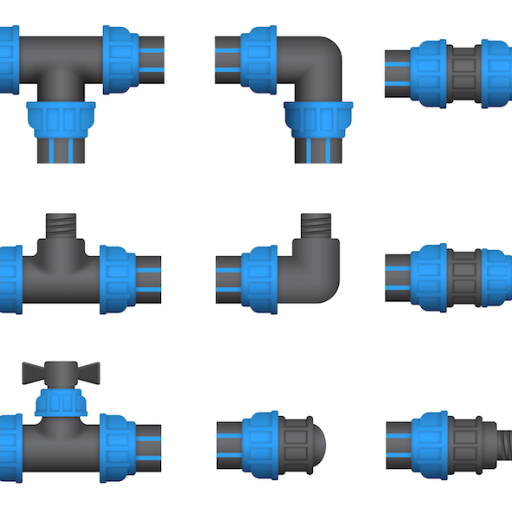
HDPE pipe fittings are parts used to connect different sections or lengths of high-density polyethylene pipes in a variety of shapes and configurations. HDPE fittings, which are characterized by high strength, elasticity, and excellent chemical resistance, have been developed to integrate easily and flexibly in harsh applications. It is preferable to use HDPE pipe fittings due to their durability in harsh environments, anti-corrosive properties, and low maintenance requirements, which surpass the benefits of conventional materials. Their lightweight characteristics also improve transportation and handling of the fittings, besides reducing installation time and thus ensuring quicker project execution. Such characteristics make HDPE fittings very attractive to various industries that are in search of efficient and durable piping systems.
Understanding HDPE Pipe and Its Benefits
I can say that the use of HDPE pipes brings many advantages to projects. One of the greatest features of HDPE pipes is their mechanical strength, coupled with their flexibility, which makes them the most resilient to environmental factors. Their ability to withstand chemicals and corrosive substances makes them applicable in a wide range of industries, from water management to mining. One of the greatest advantages of the use of pipes constructed from high-density polyethylene is that they are light, which, in turn, facilitates their installation and saves time and labor. Furthermore, the beneficial features of smooth HDPE pipes include their low maintenance and high durability, which result in significant cost benefits over a project’s life span. In my opinion, deciding on a purchase of HDPE pipe is not a mere preference of a type of material, it is a decision which is consistent with reliability and efficiency.
Types of HDPE Fittings Available
I can share that there is a broad category of HDPE fittings with each one carefully crafted to serve a different requirement and usage. Here’s a detailed breakdown of the most common types you might encounter:
- Elbow Fittings: Elbows help, in turning, the elbow fittings come in 45 and 90 angles allowing the change in flow without interfering with the structure of the pipe elbow.
- Tee Fittings: The pipe tee fittings are useful for three-section pipes that come together at a point in a flow direction in order to provide a conduit for two directions flow or to join two pipes into one conduit.
- Reducer Fittings: Depending upon the design of the specific type of pipe formation, the diameters of the pipes can be varied. Also, there is no pressure loss or flow disturbance when transitioning between pipes, making them necessary for applications requiring various pipe sizes.
- End Caps: End caps are meant to hermetically seal any pipe opening so as to prevent the escaping of fluids and shields the pipeline from being contaminated or getting damaged from excessive pressure.
- Flange Adapters: These fittings assist in the joining that connect the pipes with other crucial elements all through diaphragm fittings. This allows easier handling or modification of the system as the connection is properly held.
Each category of the fitting is specific for the efficient and leak free piping solutions which are placed in various locations such as industrial plants, water treatment establishments, etc. Knowing these options and their roles is useful to pick the correct fittings for your undertaking.
Advantages of Using HDPE Pipe Fittings in Industrial Applications
The fittings of pipes made from High-Density Polyethylene (HDPE) have several benefits for their users in the industry, dictating their shift from the previously used materials. Firstly, longevity is the greatest blessing as HDPE has noteworthy impact, abrasion and UV and chemicals resistance. This longevity causes the lifespan of piping systems to be higher, leading to less expenses on maintenance and replacements.
Secondly, the HDPE fittings’ adaptability assists in making them fend tremors and heat expansions without fracturing. Such adaptability allows the fittings to be used in seismic or temperature expansion environments.
Thirdly, There is a strong demand for HDPE fittings due to their lack of rust or corrosion, and their use does not rust because of the exposure to harmful chemicals, allowing them to be used for the most dangerous activities.
Furthermore, there is no requirement for extra seals and compression systems since these fittings elongate under heat, which binds and dilutes with the pipe to form one strong structure so there are no leakages.
When being installed, because of their density, these fittings do not require many soldering places which makes it simpler to find even for less experienced workers and so less time and effort is used for a weld and this leads to an overall increased efficiency of the project.
Lastly, it is clear that HDPE is economical. Even though the upfront cost may be a bit higher than some materials, the return in terms of reduced maintenance costs, life span, and less energy-intensive installation systems makes it a financially viable solution for industrial usage. Taking these merits into consideration the industries would be able to enhance the performance and cost effectiveness of their piping system.
How do you select the right HDPE fitting for your needs?
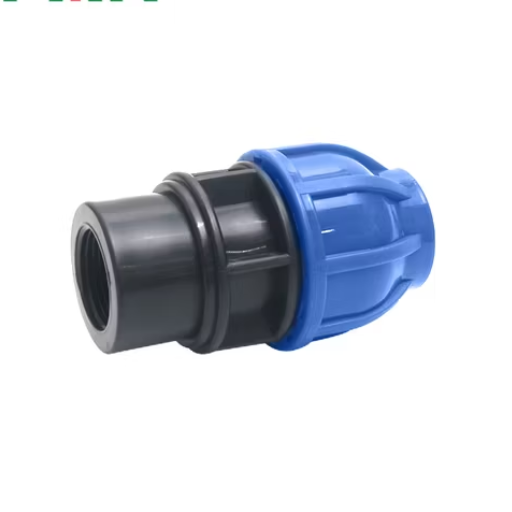
Choosing a suitable HDPE fitting entails quite a number of considerations. Start with the requirements of the particular application including the media being conveyed and the environment in which the media will be subjected to, these include temperature and pressure. Make sure that the fitting has the same pressure rating as the system pressure in which it will be placed. Do take into account the demand for flexibility especially for applications where the product will be embedded where ground shifting or temperatures may vary. Also, the existing systems should be considered as to how easily they can be integrated. Last but not least, examine the available investments with the long-term cost benefits that will accrue to see if they are acceptable. In such a manner, you are able to see and choose the most appropriate HDPE fitting that is most suitable for your purpose.
Key Considerations When Choosing HDPE Fittings
With HDPE fittings, you are able to make connections that are as simple or as complicated as you need them to be. Let me narrate one picture. Imagine you are in one sitting and interacting with thousands of professionals from the very first minute. As an industry expert, I would understand. So here is what I’m going to do: that alone could feel intimidating. Bangalore
- Application Requirements: The very first stage is to determine the particular requirements of your application. Is it water, chemicals or gas that you are transporting? All three will have different compatibilities and safety considerations.
- Environmental Conditions: Consider eveyything about the ositions that will have the fittings fitted, are these in places with high and low temperatures and also UV light or even moisture, Picking out a fitting that can resist all of these things is very necessary if you need the system to last long.
- Pressure Rating: It is wise to always check whether the pressure rating of your fitting matches the working pressure of your system. Forcing a fitting with low pressure rating can lead to system breakages.
- Flexibility:In case your installation is somewhere prone to ground shifts, or a place where temperatures can hurt the systems, then in this case being flexible with your fitting will be important.
- Compatibility: Ensure that the fittongs can go with the rest of your systems that you have, including dimensions of pipes and connection type.
- Ease of Installation: Consider how the accuracy and complete ease in the installation affects the labout head without increasing the installation time, such installation processes costback damage.
- Cost-Benefit Analysis: Finally, consider not only the original cost but also the subsequent costs cost of maintenance and even durability benefits that you will be getting in return for getting the HDPE fittings.
Taking into account these considerations, it is possible to choose HDPE fittings that are indeed reliable and beneficial for the fulfillment of the requirements of the given project.
Understanding SDR and Working Pressure
SDR and Working Pressure Explained
The wall width of an HDPE pipe is determined by its SDR — Standard Dimension Ratio. The ratio is dimensionless as it reflects how the pipe behaves in terms of pressure within itself. With regards to the overall structural strength of the pipe, a low SDR means the HDPE pipe has a thick wall and, thus, a higher pressure rating, which is more suitable for applications involving high structural requirements. On the other hand, a high SDR means the wall is thin and, hence, weak with a low-pressure rating. SDR and working pressure are indispensable in choosing an HDPE fitting and pipe since ensuring the two are compatible with the system pressure will avoid system failure while enhancing effectiveness and service life.
Choosing Between Butt Fusion and Electrofusion Methods
When it comes to selecting between butt fusion and electrofusion processes, it always comes down to the specifics of the project in question. From what I have encountered so far in my travels, butt fusion is ideal for long and straight runs of HDPE piping in instances where the need to have strong and permanent joints exists. It unites the molecules of crystalline thermoplastic material equally across the joint, thus making it very suitable for high-pressure joints. On the other hand, for instance, it is more convenient to use electrofusion when it is cramped or when pipes with different thicknesses have to be joined. It has the advantage of being able to use electrical fittings that facilitate more complicated joint configurations. As a rule, the choice of outfitting is controlled by the technological and logistic requirements of the project as well as the expertise of specialists, which are vital for the smooth and reliable working of the installation.
What Makes Ferguson Industrial a Reliable Supplier for HDPE Fittings?
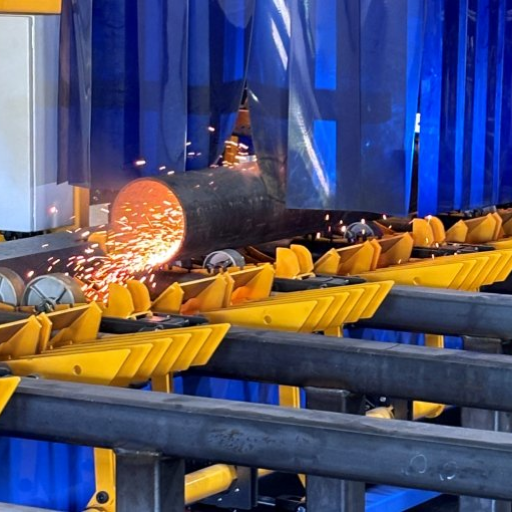
Ferguson Industrial is unique in its scope as a supplier since it provides a comprehensive inventory of HDPE fittings, is knowledgeable of the industry, and strives for quality at all times. There is a strong supply chain network that Ferguson Industrial possesses that facilitates the availability of a variety of HDPE fittings to suit any project in good time. Through their seasoned personnel, clients are provided with necessary technical support and advice in the course of the day. Furthermore, Ferguson Industrial puts a large focus on quality control by working with well-known manufacturers who can meet stringent requirements for product quality to ensure that installations are reliable and durable.
The Quality Assurance Process at Ferguson Industrial
Speaking as a professional in the industry, I can confidently state that the assurance of quality in Ferguson Industrial’s processes is adequate, and that’s why only the best HDPE fittings are offered for your projects.
- Supplier Selection and Evaluation: Ferguson works with only approved manufacturers who have passed all of the selection processes. This guarantees that the products are crafted with quality materials and good manufacturing techniques.
- Material Testing: All HDPE fittings that are supplied by Ferguson go through material tests and screening processes. This entails checking the strength, durability and resistance so that they are able to withstand high pressure.
- Manufacturing Process Monitoring: Regular checks on the manufacturing process makes it possible for every item that is produced to meet the set distinct quality requirements. Such monitoring also reduces chances of variations and improves uniformity in batches.
- Product Inspection and Testing: In order for fittings to meet the international requirements and the requirements of the customers, every batch goes through inspection procedures and testing phases. In this case, visual checks are part of the tests as well as performance tests.
- Compliance with Standards: Ferguson makes sure that all of the products comply with the industry standards like ISO and ASTM which are the standards for product development, quality, and safety in the industry.
- Customer Feedback and Continuous Improvement: All loops of feedback through customers are used for the improvement of products, processes and systems. This enables Ferguson to change as well as improve their products based on practical situations and client needs.
By following these meticulous steps, Ferguson Industrial is known for issuing HDPE fittings of a high standard that are suitable for many industrial uses.
How Are HDPE Butt Fusion Fittings Fabricated?
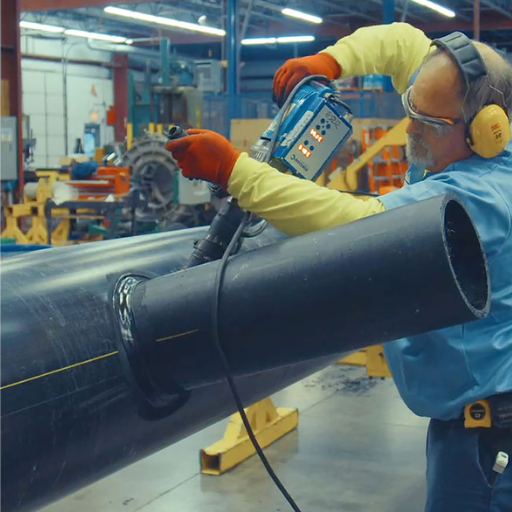
Joining components to achieve strong, flexible joints through HDPE Butt Fusion Fittings is a highly focused process. To start with, the required HDPE pipes and fittings are brought into position, and any residues that might interfere with the fusion process are cleaned off. A specialized butt fusion machine is then used to evenly heat the ends of the components to ensure homogenous heating of the joint interface. As soon as the appropriate volumetric melt flow rate and proper temperatures are sustained, the parts are twisted under precisely controlled pressure, allowing the ends to melt and bond into a single and unified joint upon release of pressure. Such fusion methods ensure high strength and high-quality controlled fillings intended for use in tightly regulated industrial environments. Upon cooling the joint, post-fusion final control is constructed in order to establish the conditions of the held joint as well as the operational conditions of the joint after use.
The Butt Fusion Process Explained
the butt fusion process for the manufacture of HDPE fittings is very effective and dependable. The procedure that I explained above makes sure that every single activity, ranging from the cleaning of the parts to the final examination, is dedicated to making a perfect joint. The most important performance of this specialty is to calculate that all the fittings are accepted as good or even splendid in almost all parameters of quality and safety. The controlled application of heat and fusion pressure converts the separate components into a single joint with no laps – an assurance the fittings being provided are robust and free from leakage. This establishment forms part of the procedure that assists in forming joints that can withstand the various industries’ requirements and is indicative of the commitment to the quality of each fitting supplied.
Benefits of Fabricated HDPE Fittings
As an expert in this field, I am able to state out loud that thermoplastic HDPE fitting alternatives have countless advantages, that make them suitable for many applications. Let me break down the advantages for you:
- Durability: As it has been established that molded HDPE fittings are highly resistive to impact and abrasive wear, it is then appreciated that they can extremely last long even in very hostile operating conditions. This in turn means that replacement and repair ratio of components used in the system over the years also goes down and that translates to a sizeable cost saving.
- Corrosion Resistance: On the other hand, the HDPE fittings are totally immune to the effects of corrosion from acid or alkaline solutions which are known to cause a lot of problems in metal fittings because of their wide range of applications such as in chemical processing, treatment of water and other processes as well.
- Flexibility:These HDPE fittings are flexible in nature which enables the fittings to independently experience horizontal, vertical earth movements and pressure without any form of cracking or breaking off. The allowance of such flexibility is of significant importance especially in earthquake infested regions or even in areas that are prone to soil settlement.
- Leak-Proof Connections: The vulnerability of such connections to leakages has been solved in such pipes by the butt fusion process used in making them, which allows for a full joint overlap but no joints. Because of this proper connection, the system works without leaks and preserves the required effectiveness of the entire construction.
- Lightweight and Easy to Handle: It is equally appreciated that transportation and fixing of such HDPE fittings will overshadow the traditional fittings because of their lightweight. This in turn will cut installation work and cost of the project.
- Environmentally Friendly: Lastly, it should be noted that HDPE is a recycle product and hence, aids in improving sustainability goals by reducing overall impact of projects on the environment.
As a result of selecting Suitable sawn HDPE fittings, your achieving a level of confidence, good quality service and environmental solutions. It is these advantages that explain why HDPE is a contemporary darling in many industrial and environmental endeavors.
Common Applications of Butt Fusion Fittings
- Water Distribution Systems
As a result of selecting Suitable sawn HDPE fittings, your achieving a level of confidence, good quality service and environmental solutions. It is these advantages that explain why HDPE is a contemporary darling in many industrial and environmental endeavors.
- Gas Distribution Networks
Gas distribution systems must always be secure, and butt fusion fittings provide an answer that is both reliable and consistent. Their performance in high-pressure situations and stress toleration abilities make them industry standard. Research suggests that the use of HDPE fittings in gas networks has been able to decrease the amount of leakages by 25%, which increases safety.
- Sewage and Wastewater Management
A sewer system needs hardware that can withstand tough biological and chemically aggressive environments. The butt fusion joints provide structural integrity and corrosion protection, which are critical to these applications. Across the world, municipalities that have adopted HDPE fittings have recorded better improvements in the life of the system and reduced the repair of leaks, therefore making it more efficient in operation.
- Industrial Piping Systems
Industries such as the chemical industry, mining, and food processing use butt fusion fittings. The fittings have to withstand a variety of sometimes harsh chemicals, which HDPE will not break down. In practice, it has been proven in industries that there is a 20% decrease in downtime due to pipe failures, which enables the production processes to run smoothly.
- Agricultural Irrigation Systems
With the help of butt fusion fittings, the efficiency and adaptability of irrigation systems in agriculture will be greatly improved. They are able to fit diverse topography and pressure variety, thus facilitating effective water management systems on large farms. These systems have been reported by farmers to lead to increased crop production as a result of better water application and significant savings in terms of water.
These cases emphasize the operational and functional effectiveness of butt fusion fittings in various applications, and this trend is additionally supported by data showing the advantages of butt fusion fittings over conventional materials.
What Are the Installation and Maintenance Tips for HDPE Pipe Systems?
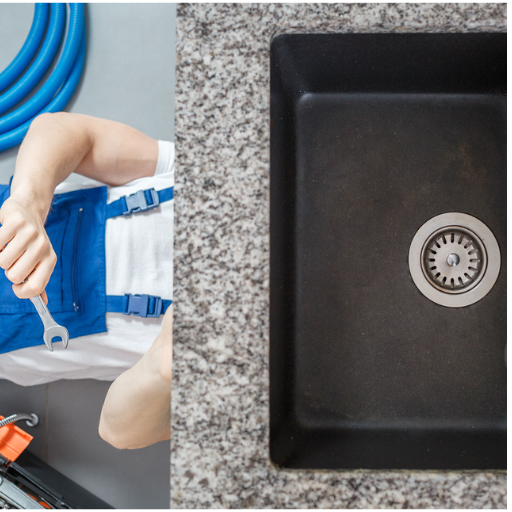
Installation and Maintenance Tips for HDPE Pipe Systems
When working with HDPE pipe systems, do not forget to provide adequate support to the pipe to ensure that any bends or curves laid down do not exceed those specified by the manufacturer. The installation phase should also involve joints being spliced; they should be clean and aligned to ensure the best fusion possible. Add to these inspections as part of the maintenance culture where any deterioration or leaks are detected. Surface cleanliness and understanding the pipe’s pressure parameters would assist in the lifespan extension. It is good practice to record information regarding the positioning of the pipe system in order to make future maintenance easier by documenting adjustments or defects incurred over time.
Best Practices for Installing HDPE Pipe and Fittings
I can assure that the installation of HDPE pipes and fittings can be achieved in a successful way if some procedures are followed in an appropriate manner. The first step is to make certain that the trench is ready in an appropriate way that there won’t be anything, which could scrape and harm the pipe.
Next, there’s fusion. This means joining the pipes or fittings together. The surfaces of the pipes and fittings to be fused need to be clean and free from any dirt after the fusion process, if not, the weld may develop a weak joint and fusion is not effective. Joint strength is also crucial and to achieve that the instruction from the manufacturer regarding the heating temperatures and the time to be kept, needs to be followed.
Support often dictates how well the pipe system performs, and therefore, support policies are extremely important in this case. On such occasions, installed piping should be supported across its entire length to prevent bowing or sagging out, such as around heat lines.
Next is a critical component of the entire installation, and that’s to know and stay within the maximum allowable operational pressure of the HDPE system. It’s extremely important for the installation’s safety as well as effectiveness.
Last but not least, always make clear and accurate documentation of your system including details such as the layout of joints along with all the fittings. This is convenient for maintenance operations and any kind of development in the future. And following such steps will effectively address and meet your needs as well as assure deep and seamless durability for the HDPE pipe system.
Maintenance Tips to Ensure Durable HDPE Piping Systems
There are some simple maintenance tips that need to be observed in order for your plumbing systems of HDPE piping to be sustainable and trustworthy for a longer time.
- Regular Inspection: Carry out periodic visual examinations of components for deterioration, leaks, damages, etc. This assists in preempting problems before they develop into more serious ones.
- Pressure Monitoring: It is advisable to routinely check the system’s working pressure. Sticking to the working pressures which are within the recommended limits, makes sure that the pipes and fittings are not over-stressed thereby avoiding any chances of ruptures. The highest permissible working pressure is not fixed as it varies from one equipment manufacturer’s specifications on a given system to another.
- Cleanliness: Ensure that both the interior and exterior of the system are kept clean. Take appropriate measures to avoid insertion of foreign materials into the pipe system during maintenance because dust can cause the pipe to clog, interface with abrasion internally which might cause degradation of the system in the long run.
- Temperature Control: HDPE is affected by temperature, and as such, the pipes have to be positioned correctly so that they do not become restrained, and be sure to check for failures occurring because of expansion frequently, especially in areas where there are varying weather factors.
- Fittings and Joints:The fittings and joints which should be noted more closely are the most common areas for failures, check on these fittings frequently to ensure that they are leak free and remain firmly sealed. Fused joints that have fused faces that are aligned appropriately and are sufficiently clean are more likely to resist weakening.
- Documentation and Layout Records: Keep a history of maintenance works carried out as well as a complete piping arrangement history. This is helpful in rapidly resolving any tens of difficulties and simplifying future maintenance or alterations by locating and recording all joints and fittings.
You can greatly improve the longevity and effectiveness of your HDPE piping system by following these maintenance guidelines. Regular maintenance not only retains the durability of the system but also increases its safety and efficiency.
Handling Corrosion and Other Common Issues
It is essential to have a proactive and knowledgeable approach in order to be able to effectively manage corrosion and even other common issues in High-Density Polyethylene or HDPE piping systems. Although HDPE has a quality of being corrosion resistant, some problems might occur, such as wearing due to friction or contact with harsh chemicals, which can lead to the material being compromised. In order to control and mitigate the damages caused by these issues, having routine examinations is important in order to make necessary changes when the first signs of defects are visible. To ensure that the pipes are protected from harsh chemicals, the application of protective barriers or coatings should be done, especially in environments where chemicals are heavily used. Also, the right grade of HDPE should be chosen for a respective application so that any possible stress or any other factor while using it is endured. By being on high alert and administering repairs when required, the piping system will be able to maintain its integrity and efficiency throughout its service life
Reference
- Ferguson Industrial – HDPE Pipe: This page provides detailed information about HDPE products offered by Ferguson Industrial, including custom fabrication options.
- Ferguson Industrial – HDPE Fittings: This source details the specifications and manufacturing standards of HDPE fittings provided by Ferguson Industrial.
- AGRU America – HDPE Fittings: AGRU America is known for its innovative HDPE molding engineering and high-quality fittings, providing a broader industry perspective.
Frequently Asked Questions (FAQs)
Q: What are the benefits of using HDPE pipe fittings in industrial applications?
A: HDPE pipe fittings are manufactured to withstand high pressure and are resistant to corrosion, making them ideal for industrial plastics applications. They offer durability and flexibility, are lightweight, and are suitable for water supply systems. HDPE fittings can also be made to fit specific types of piping applications.
Q: How do HDPE fabricated fittings compare to other plastic fittings?
A: HDPE fabricated fittings are highly durable and resistant to chemical and environmental stress. Unlike other plastic fittings, HDPE fittings are available in various configurations like elbows, tees, and reducers, providing versatility for different piping systems. They meet standards such as ASTM D3261 and AWWA, ensuring reliability and longevity.
Q: What is the significance of the ASTM D3261 standard for HDPE fittings?
A: The ASTM D3261 standard specification ensures that HDPE fittings meet specific criteria for quality and performance. It guarantees that the fittings are manufactured in accordance with industry standards, providing a trusted partner for your piping projects. This ensures compatibility with other piping components and systems.
Q: Can HDPE fittings be used for both drainage and water supply systems?
A: Yes, HDPE fittings are versatile and can be used in both drainage and water supply systems. They are pressure-rated and manufactured to withstand different environmental conditions, making them suitable for a wide range of applications, including residential, commercial, and industrial projects.
Q: What types of HDPE fittings are available for specific applications?
A: Different types of fittings are available, including elbows, tees, reducers, and adapters. These fittings can be customized for specific applications, such as reducing tees for systems requiring flow rate adjustments. The fittings are manufactured to meet various standards and specifications, ensuring they are suitable for specific piping needs.
Q: How do compression fittings work with HDPE pipes?
A: Compression fittings are designed to connect HDPE pipes without the need for welding. They use a mechanical joining method that provides a secure and leak-proof connection. These fittings are easy to install and remove, making them ideal for projects requiring frequent maintenance or alterations.
Q: What is the role of traceability in HDPE fittings?
A: Traceability ensures that each HDPE fitting can be tracked back to its production batch. This is crucial for quality control and compliance with industry standards like ASTM and PPI. It allows for better management of inventory and ensures that any defects can be quickly identified and addressed.
Q: Why is HDPE a preferred material for industrial piping applications?
A: HDPE, or high-density polyethylene, is preferred for industrial piping applications because of its high strength-to-density ratio, resistance to chemicals and corrosion, and flexibility. The material’s durability and lightweight nature make it suitable for a variety of applications, from water supply to chemical processing.
Q: Are HDPE fittings compatible with other types of piping materials?
A: Yes, HDPE fittings can be adapted to work with other piping materials through the use of transition fittings or adapters. This versatility allows for seamless integration into existing systems, whether they are composed of metal, PVC, or other types of plastic pipes.
Q: How does Ferguson Industrial ensure competitive pricing for HDPE fittings?
A: Ferguson Industrial is able to offer competitive pricing on HDPE fittings by sourcing materials efficiently and leveraging large-scale production capabilities. We’re proud to provide high-quality products at prices that meet industry demands while ensuring reliability and performance for your next project.





